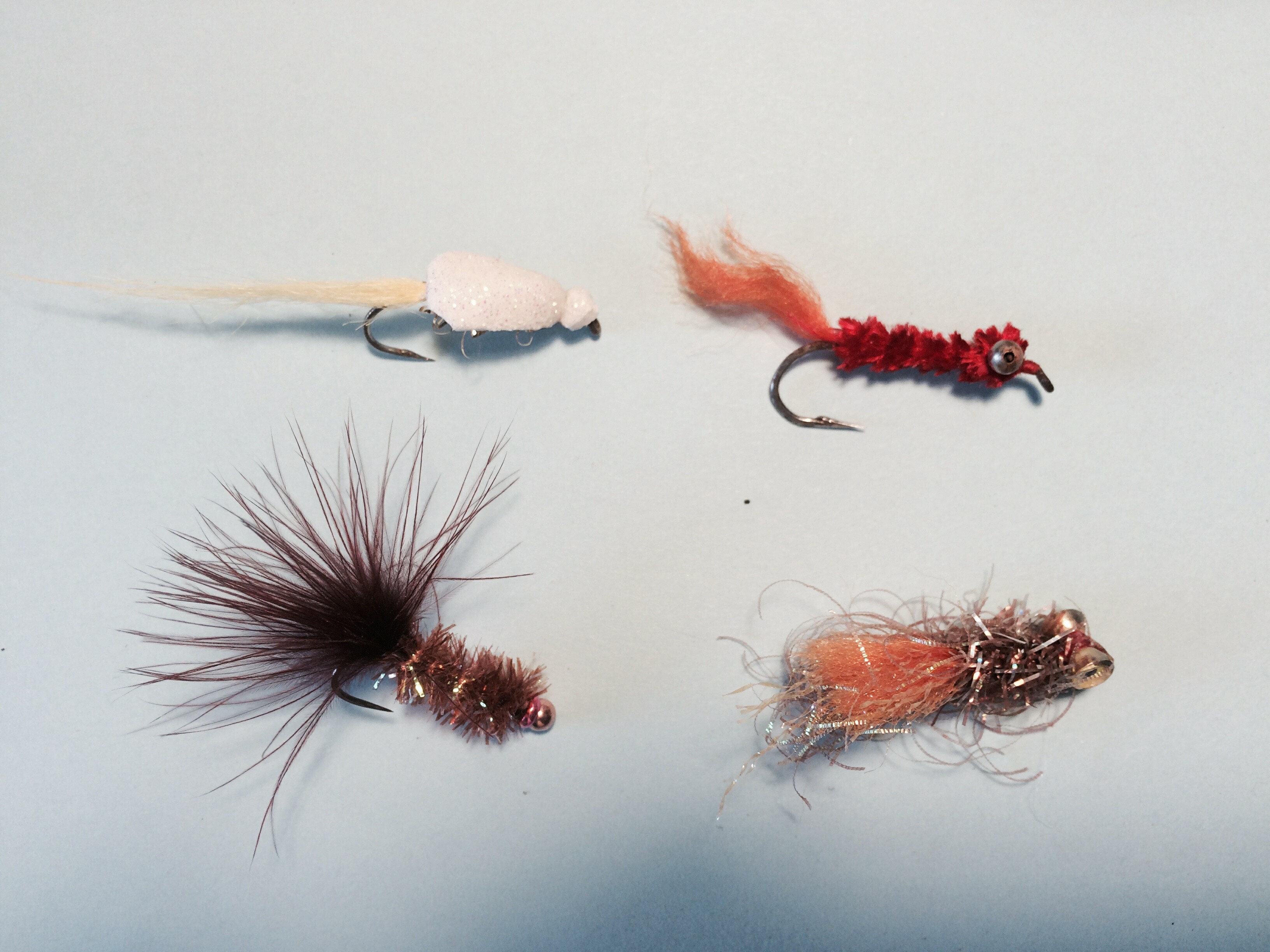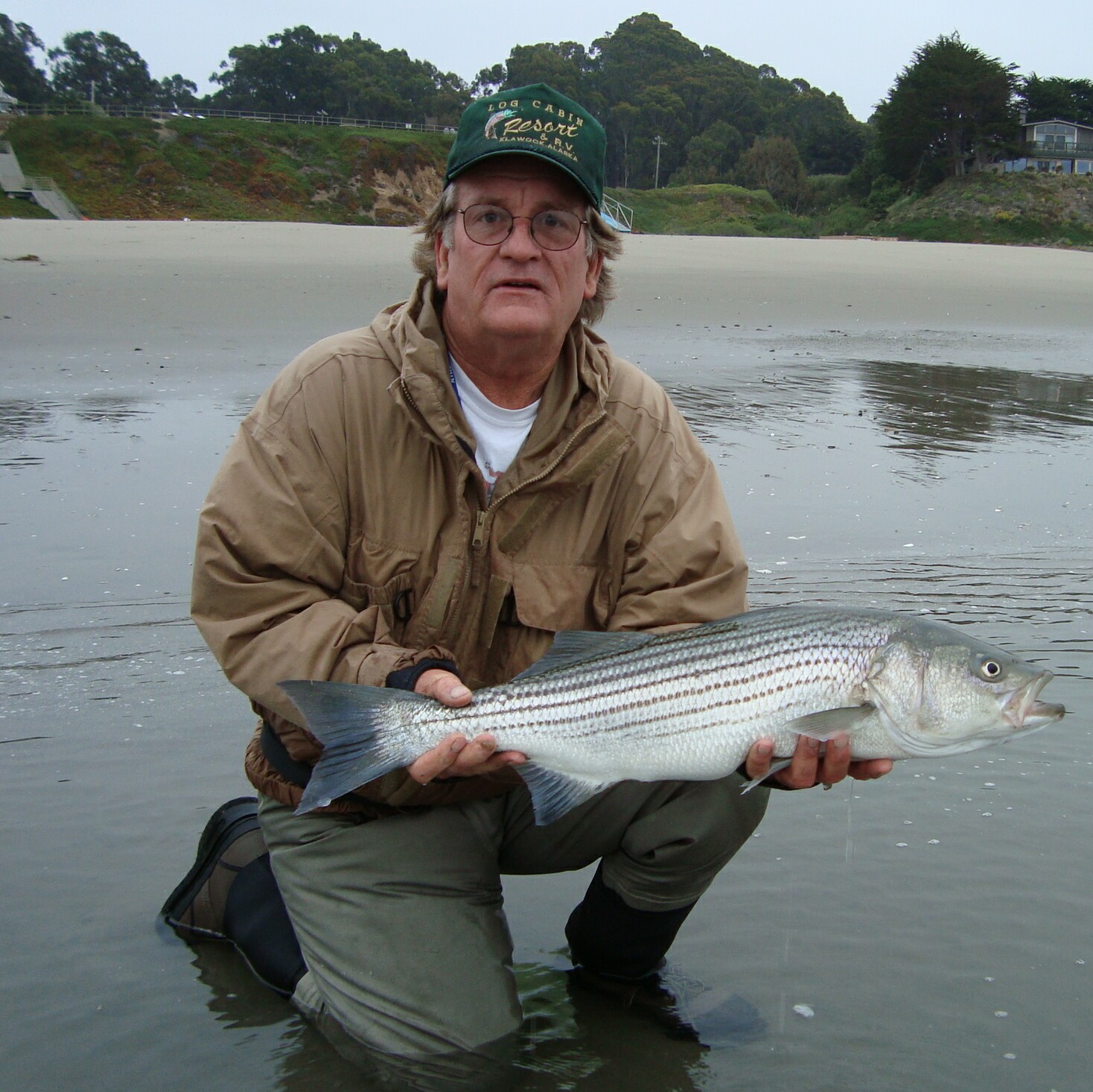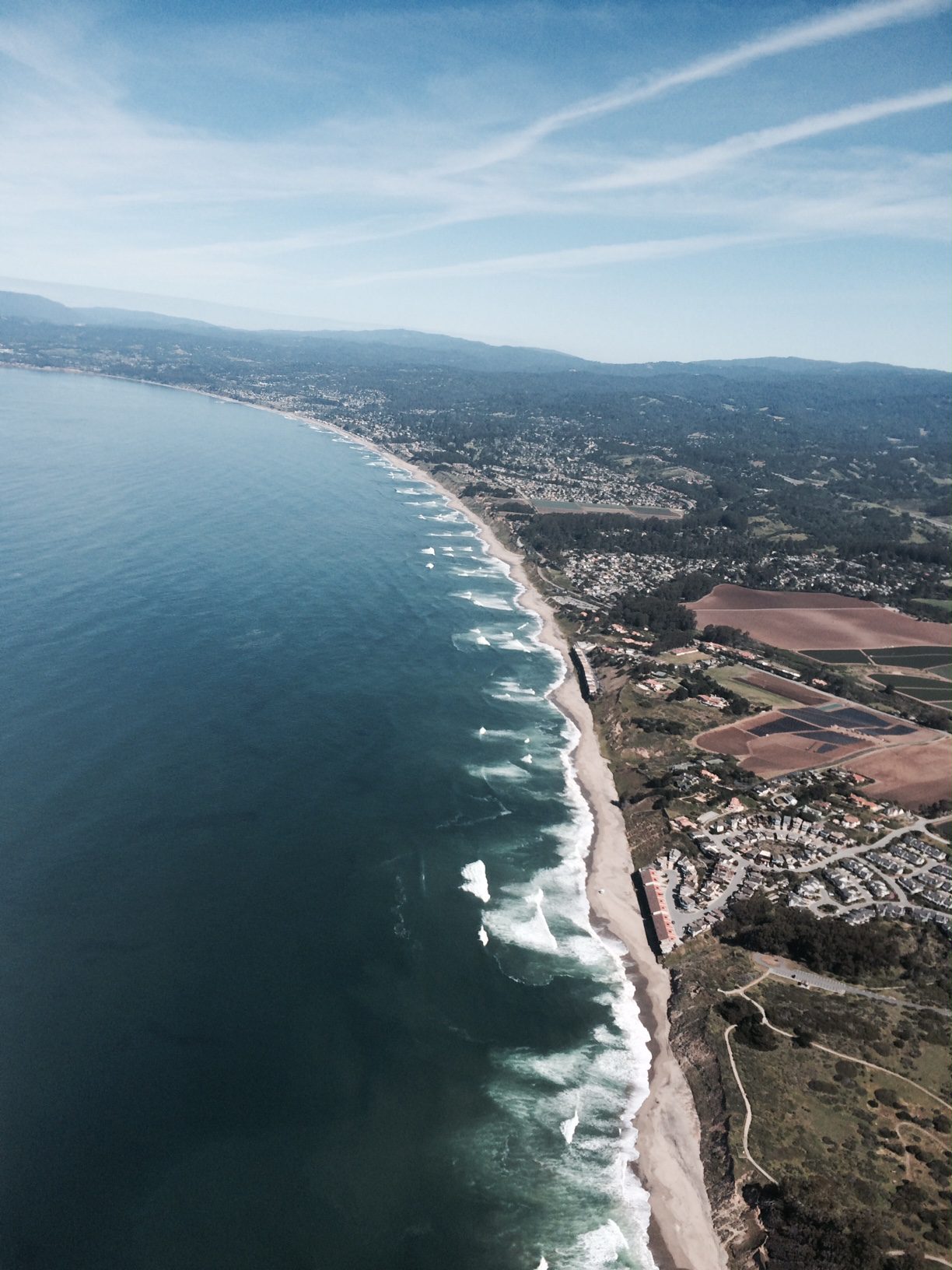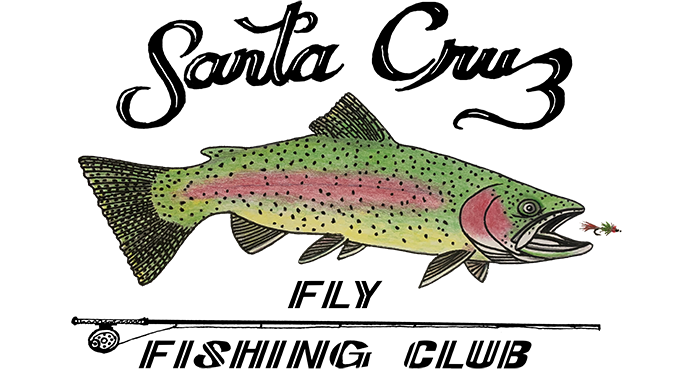WHY? Learn to fish the surf and you have opportunities close at hand and on practically every sandy coast in the world. For example, on business meetings in southern California I fish the surf very early. Then there is Florida, Mexico, Belize, Tasmania, Australia, on and on.

Rod: 6 – 9 weight rods are all acceptable, but if you hook a big striper, leopard shark, halibut, or big piece of kelp and only have a 6 weight, you could be unhappy. I recommend a standard, 9 or 10 foot 8 weight. Some of our folks are using switch (not spey) rods. Couple issues to remember: The longer the rod, the more issues with a tiny fish swinging around while you are trying to grab it. You may be forced to drag it up on the beach to get hold of it. Also and very important, with a switch rod in the surf you are NOT using spey/switch rod casting methods, you will be doing full back casts and can easily hook dogs and people behind you.
Line: Use a sinking line, either intermediate or faster sink. I use a shooting head, same gear I use at Pyramid Lake and the Forebay. Personally, I prefer 300 grain T8 or T11 so as to quickly cut down below the waves and not have the line thrown back at me by the onrushing wave.
Leader: Expensive, non eco-friendly fluorocarbon leader, is not needed. Monofilament 20 # straight or dropping to a 15# tippet is fine. For one fly, a 4 – 5 foot length is enough. Fish in the surf are not leader shy. They don’t have time to study your line in a breaking surf. Some of us run two or three hooks, but one hook is fine. You might try using a small swivel just below the butt section of your fly line if using multiple hooks to get a few get less tangles. You can’t get a double hook-up with one fly, but if you are using 2 or 3 and getting tangled, you are not fishing, so it is a trade-off. Several times I have had double hook-ups, but never a triple, so that is still a goal.
Reel care: Do not set your reel on the sand. Take your cap off and set the butt of your rod in it if necessary. The sand is very fine and will freeze the spool. I carry a bottle of water on my fanny pack to wash it when sandy water freezes up my reel.
Flies: Flies with red, orange, rootbeer colors on number 2, 4 or 6 hooks are fine. As Kirk Mathew says, “If it moves with purpose, they will hit anything”. My most productive perch fly is a #4 or #6 hook, bead chain eyes, red chenille body with a short orange yarn (or whatever) tail. Really simple, you can tie three in 10 minutes easily. For targeting Stripers, you may want to use a baitfish pattern, although I have caught stripers on most everything, including white beetles left over from Pyramid Lake. I will bring spare flies, to the club fish outs, so “not to worry”.

Stripping basket: This is mandatory. I do not recommend the net style baskets for the surf, due to the aggressive action of the waves. A stiff sided, fairly deep basket is best. On club fish outs I will have a couple spare stripping baskets available to borrow, or you can purchase one with a donation to the Club of $20.
Waders: Neoprene is not needed, the water is simply not that cold. I use boot-foot waders as they are easy to get on/off and sand doesn’t get into the boots. You can use sandals over stocking foot waders too. Or just stocking foot waders, since it is all sand, no rocks.
Jacket: I highly recommend a light jacket that you wear outside your waders and buttoned to the chin, to keep the water from splashing over the top and down your waders. Many of us wear pull-over waterproof jackets (called kayak or paddling jacket). Stohlquist makes a very good one. When (not “if”) you get knocked down by a wave because you weren’t watching, you will stay dry and not ruin your trip. I have been knocked completely down, hat off, head dripping wet but no more than a teaspoon of water down my neck. In my picture, I am wearing a red kayak jacket. Try to get one with a pocket in front for your camera and/or flybox and spare leader, because when you have the jacket on, you cannot easily get to your wader pockets inside. I wear a small waterproof fanny pack for spare flies, leader, hemostat and a water bottle.

PFD Personal Flotation Device: Not required, but a very good safety factor. Many people wear them, as the surf will knock you down sometime.
Camera: Bring one!! When you get the BIG fish or triple hook-up, you will want a picture.
Casting: Cast over the oncoming wave so the line doesn’t hit the face and wash right back to you. Retrieve immediately, as the fish may already be hitting and spitting. A good double haul cast is easy and will shoot your line 80-100 feet with little effort. Or use a switch rod. But be careful conventional casting with a switch rod, because your back cast is so far back you may hook a tourist or the tourist’s dog.
Retrieve: Everyone has their own style and no one method (fast or slow) works all the time. But you should get your rod tip down, pointing to the line, touching or practically touching the sand. As you retrieve you can feel much more with your fingers. Most fishermen are getting hits and don’t even know it. If you get a quick bump or wiggle, retrieve quickly, stripping the line into your basket with constant pressure. Any slack or hesitation and the fish will throw the barbless hook.
My procedure is to put the rod butt under my arm, tip in the water, elbows in tight and retrieve with both hands, stuffing the line into my stripping basket. This way I can feel everything all the way until I raise the rod to cast again. The line stays in the basket better too. Stripers like to hit on fast retrieves.
About 1 out of 10 of my surf perch catches are when I begin to raise the rod to cast again, so don’t stop fishing until the fly is out of the water.
Time of day to fish the surf? Early mornings or evenings, because mornings normally are calm or have an off-shore wind so you can cast easier and further. As the earth warms up, the wind shifts to on-shore, in your face. You can catch fish in the surf any time of day, but early mornings and very late evenings are best. Less people on the beach means less hookups behind you with people and their dogs.

Surf conditions: It seems to me that we are more likely to catch fish when there is a bit of wildness out there. We don’t usually do well in calm or near flat calm conditions. By the same token, the wilder the surf the more dangerous it is and the less distance you are likely to get. But don’t go home because there are 3 – 4 foot waves!, just be super careful!
Club sponsored fish-outs: You’ve never done it, so should you come? Absolutely! There will be experienced people who will be very happy to help. We start with a general discussion for everyone and provide individualized brush-up assistance as desired. But this is a bad place to start learning to cast as it has been likened to “fishing in a washing machine”.
How about my casting experience? The surf will make a good caster a much better one, it will force one to have much better line control, which is a key to distance and accuracy.
You do not need to be able to double haul, but trust me, the experience will be better for you if you can. Bigger fish are typically further out.
Beginners, please don’t start to learn in the surf, instead spend a few hours on grass playgrounds like I did. Our club has frequent casting practice sessions where everyone can learn and improve their processes, so take advantage of it. And/or contact me and I will meet and help you learn casting, especially emphasizing the double haul.
More information: When I started there were few resources, but now many articles and videos are on the web about fly fishing the surf. Here is an old website with lots of good information. It has not been updated in years, but everything still applies. Glenn Yoshimoto’s Zen Fly Fishing His “Techniques” section should be required reading. I disagree with his choice of a 6 weight rod, because when you hook big fish, you don’t want to be outgunned. Sea lions prowl the area too and are happy to eat the fish you play too long.
Santa Cruz Club website, (you are here!) full of information in their archived newsletters.
This is a great little video of catching a surf perch on a southern California Beach. Basket Perch – YouTube
Questions? Email sambishop@totlcom.com.
